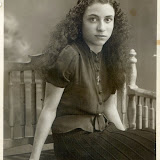The life of the dead is placed in the memory of the living.
Cicero
If you were to write a history of Armenian photography you would begin in Constantinople in the 1870s, when Pascal Sebah, the Abdullah and Gülmez brothers owned three of the most important studios in the city. There may have been Armenian photographers in Europe, Russia, the Middle East and America but in Constantinople they dominated the business. They had three advantages; their own community was large enough to sustain business on its own if necessary, there was a demand for albums and views of the city in Europe and they were living in an Islamic state slow to encourage the new technology within its faith. It is a myth that the only photographers in Constantinople were Christians and Jews. There were Turkish Muslim photographers but not many. Into the 1930s, most studios were run by Armenians or Greeks.
During the late Ottoman Empire Armenians and Greeks were marginalized, being obliged to live in certain districts, subject to unequal imposts and denied rights given to Muslims, but their situation was more complex than that suggests. They were preeminent in foreign trade, banking and the professional classes and the areas they had to live in were among the wealthiest in the city. There are stories of Armenian and Greek revolutionaries (we’d call them terrorists these days) seizing banks, of shootouts and riots in the city that ought to lay waste to the myth that Muslims and Christians lived peaceably as neighbours, also to any notion the Christian communities were innocent victims or pawns. From the 1880s onwards relationships between Christians and Muslims were punctuated by violence, a fair amount of it instigated by the Christian minorities sensing the imminent collapse of the empire.
No essentially ‘Armenian’ or ‘Greek’ aesthetic distinguished the photography – few studios in 1920s Constantinople advanced ideas about composition beyond what had been practiced since the 1860s – it is their subject matter that is important. The people who sat for their portraits belonged to the middle and upper classes and in a lot of cases could claim an ancestry in the city stretching back centuries. Even before the events of 1915 however they must have realized that regardless of how badly they might have wanted to see an end to the Ottoman Sultanate its demise meant theirs as well. Read any personal account from Turkey set between the beginning of the First World War and the declaration of the Republic in 1923 and you won’t find much celebration. Mostly it is fear and uncertainty, conditions made worse by the 1923 Lausanne Treaty and the population exchange between Greece and Turkey. Though Greeks in Constantinople were theoretically immune from the exchange, the writing was on the wall. From here on Turkey was for the Turks; the Greeks, Armenians and Jews who stayed on would not be made to feel at home. These are the faces of people living through the end of times, when a city they have called home for generations is being shut off to them.
Identifying a Greek or Armenian studio portrait is usually straightforward because of the photographer’s stamp. Sometimes there is a message on the back in Armenian or Greek script and obviously, a girl in her communion dress or a crucifix around someone’s neck indicates an indisputable fact. Clothing isn’t always an indicator. Ataturk’s reforms westernized dress, (the fez and, for a time, the headscarf were prohibited) which makes it more difficult to determine who people were in photos from the 1930s onwards. There is a small problem with studio names too. Although Greeks tended to use their surnames, Armenians, like Turks, preferred more generic business titles, such as Foto Venus or Sabah (Turkish for morning, and a later manifestation of the Sebah studio). Often the research throws up small but intriguing scraps, such as Foto Galatasaray being run by Maryam Sahinyan, undoubtedly one of the few if not actually the only woman running a studio in Istanbul in the 1930s.
All the photographs in this post can be confirmed as either being taken by Armenian or Greek studios or being of Christians living in Constantinople/Istanbul. It would be remiss however not to acknowledge the diaspora following events in 1915, when Armenians emigrated to Europe and the Middle East, Cairo, Alexandria and Beirut in particular. Between the 1920s and the 1950s some of the best known studios in these cities belonged to Turkish born Armenians such as Armand and Van Leo.
All photographs become more interesting the older they get and all old photographs show a lost world but a particular case can be made for these. In September 1955, Turkish nationalists rioted in Istanbul, attacking Greek buildings, killing 13 people and raping a number of women. The pogrom effectively marked the end of the Hellenic contribution to the city. Within a few years the Greek population had halved. By the 1990s it was estimated to number about 2000. Turkish nationalists did their utmost to erase the memory of Christian communities in Istanbul but for Armenians and Greeks (who still officially refer to Istanbul as Constantinople) the city became infused with a mythic ideal, the garden from which they’d been banished. There are still reminders of the Armenian and Greek communities in Istanbul, churches, inscriptions on buildings and the like but they tell us nothing of the people who lived here. Portraits such as these are the most tangible evidence we have of a society in the process of self-destruction.
VIEW THE GALLERY HERE
 |
| LOST WORLD |






No comments:
Post a Comment
Add comments here